Comic strip fans like to talk about records, and the discussion of the longest lasting series is a favourite. We tend to ignore toppers when having these discussions, though, and of course there’s a good reason for that — without the main strip there’s no need for a topper, so they are automatically disqualified from being the longest running series.
But what is the longest running topper? this can be a tough question in and of itself, because the longest running series were still being produced into the 1960s and even 1970s, but they appeared in vanishingly few papers. Some, I’m convinced, were produced but never ended up being printed anywhere.
By the 1960s the third page strip was the de facto standard, and that format almost never included a topper. By then you would generally only see a topper on some tab or half-page formats. So few papers used these formats, especially for strips that used toppers, which practically begged to be cut down, that tracking the toppers becomes next to impossible. In fact, for my research I’ve often had to base my end dates on original art, which is often the only place you’re going to see toppers of these late years.
The Sunday strip of Moon Mullins added its topper Kitty Higgins* around the same time as the other Chicago Tribune strips. The first strip, seen above, ran on December 14 1930. The strip was quite obviously an afterthought, with the gags (even the very first) being real mouldy oldies. No doubt production of this strip was by Frank Willard’s assistant Ferd Johnson, and neither of these guys wasted too much brain juice on the feature. Although the first strip was done in a two-tier format, it would quickly settle down into a one-tier affair for its many years underneath the main strip (yes, they’re still called toppers when they run at the bottom of the page).
The Chicago Tribune-New York News Sunday strips hung onto their toppers much longer than the products of other syndicates. Most of their A-list strips kept doggedly including toppers into the early 1970s, even though they were used by maybe one out of a hundred papers that ran the main strip. For the longest time I thought Kitty Higgins ended in 1973, because that was the last year that it appeared in the Editor & Publisher Syndicate Directory. It wasn’t until recent years that I saw the original art for the May 26 1974 strip, which included the topper and so upgraded the end date to sometime after that.
Finally I found a newspaper online that actually ran Moon Mullins consistently as a tab in 1974, the Elizabethton Star. The last Kitty Higgins I can find is the release of September 1 1974. The September 8 issue, sadly, is missing the comics section, but on the 15th the topper is gone, and Kitty is co-starring in the main strip — perhaps she had an appearance contract?
What is either the final or penultimate Kitty Higgins is here, from digitized microfilm:
That gives Kitty Higgins a forty-four year run, a very impressive accomplishment, especially considering that no one, including the creators, really cared much about the strip for that whole time. Does Kitty get the crown as longest running topper? I can think of one or two toppers which might just possibly edge it out. What do you think?
* Technically that was not Moon Mullins’ first topper, but that’s a tale for another day.




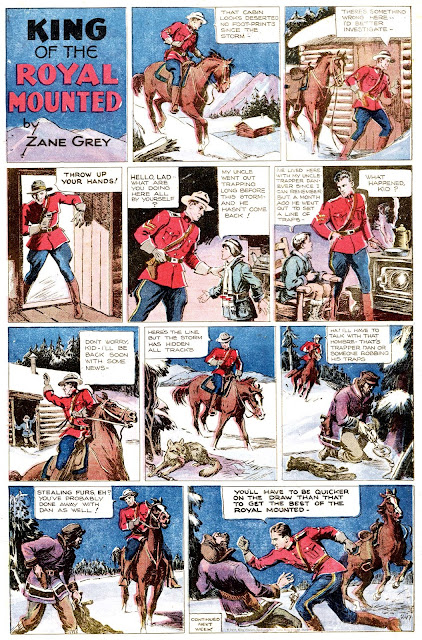
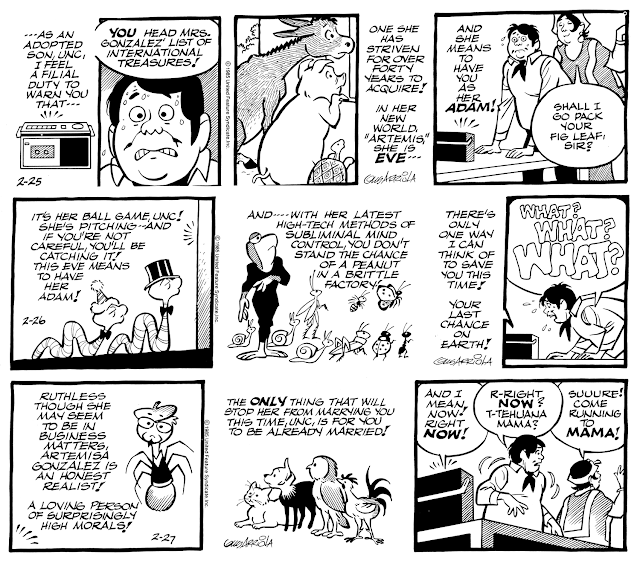
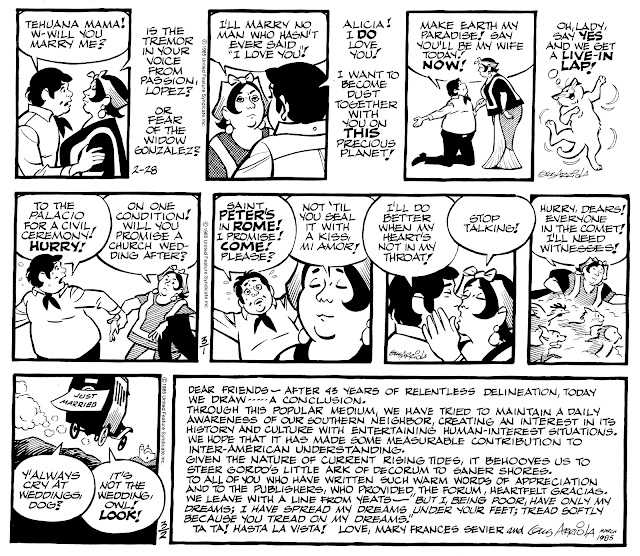
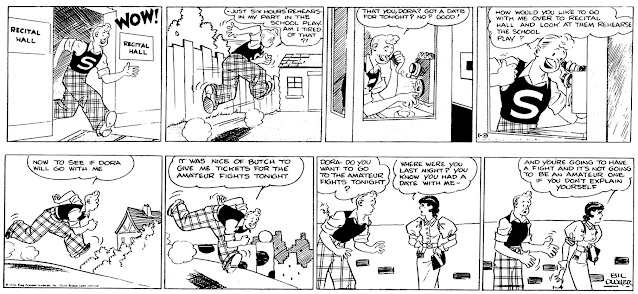



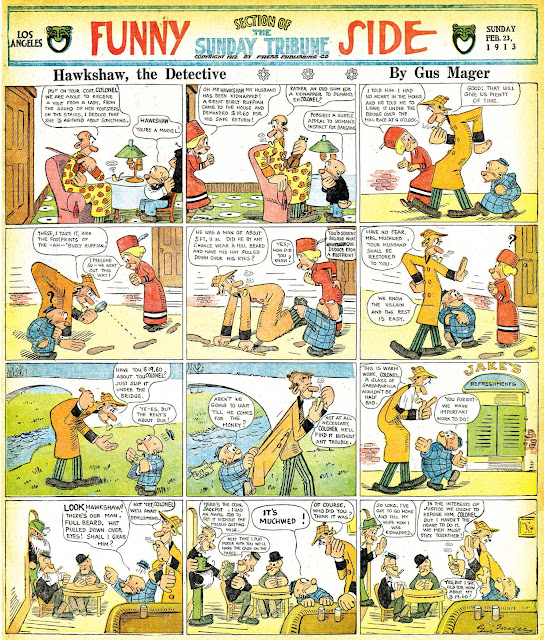
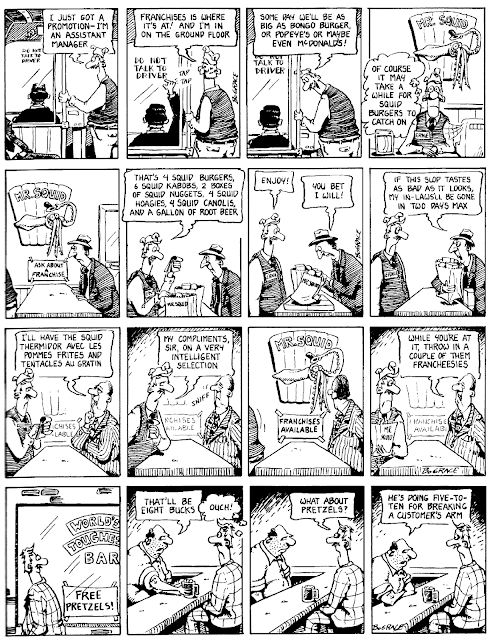
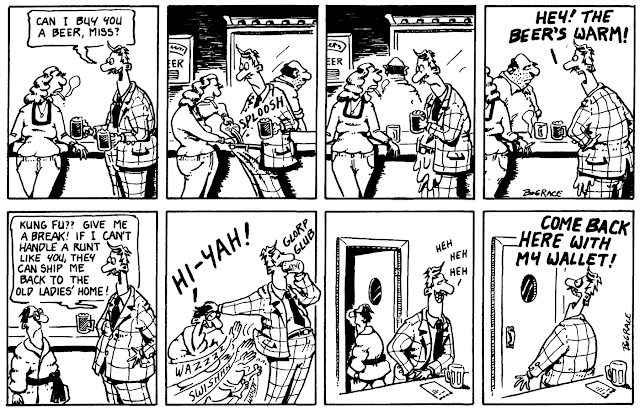

Hello Allan-
Gordo's biggest drawback was, perhaps because of the "educational" component, was the tendency to be very talky, and though in these examples, he obviously had a hard deadline for an "¡Adios!" strip, and had to explain a lot of story fast, through the years he did a lot of very text-heavy, action-light entries.
Nevertheless, Arriola is somewhat overlooked. He was capable of truly dazzling compositions that should have put him into the class of greatest penmen of the form. But I remember few papers that carried it, as if it were just beyond the number of UFS strips a client paper would take.
Might be that it would've been more popular in the Southwest, but I did my growing up in the Northeast.
"Rising tides" might also be taken literally. There's an environmentalist spin on this last story; the Widow Gonzalez is colonizing a new planet because this one is increasingly polluted and tapped out.
It's a shame we don't have more reprint collections. "Accidental Ambassador Gordo" is a combination of highlights and personal memoir; it includes some story arcs and leaves you wanting more. There was also "Gordo's Critters", a collection of late-period Sunday pages.